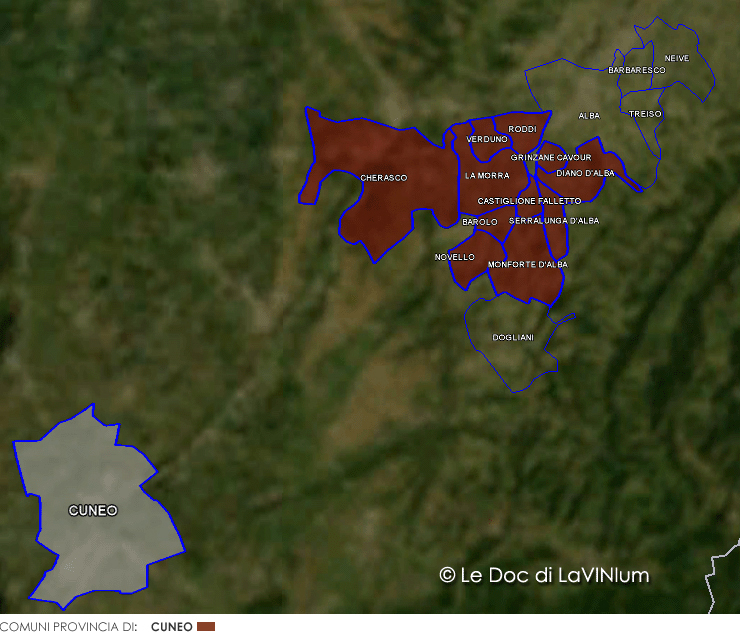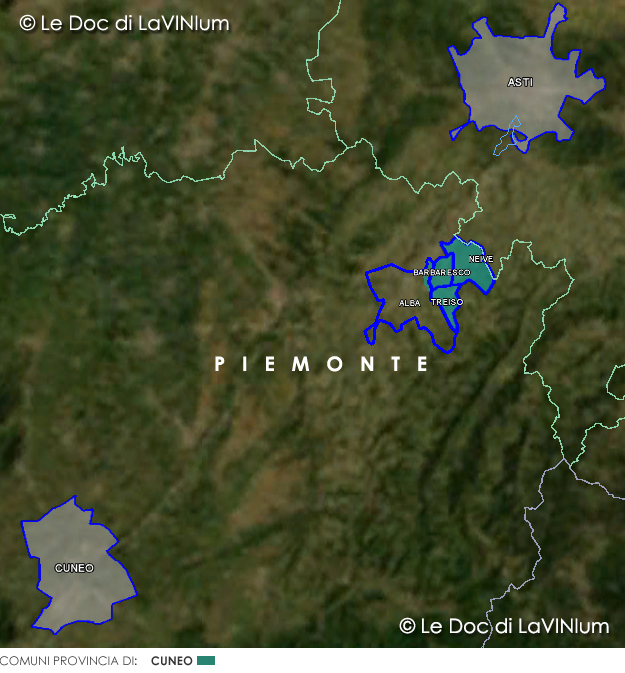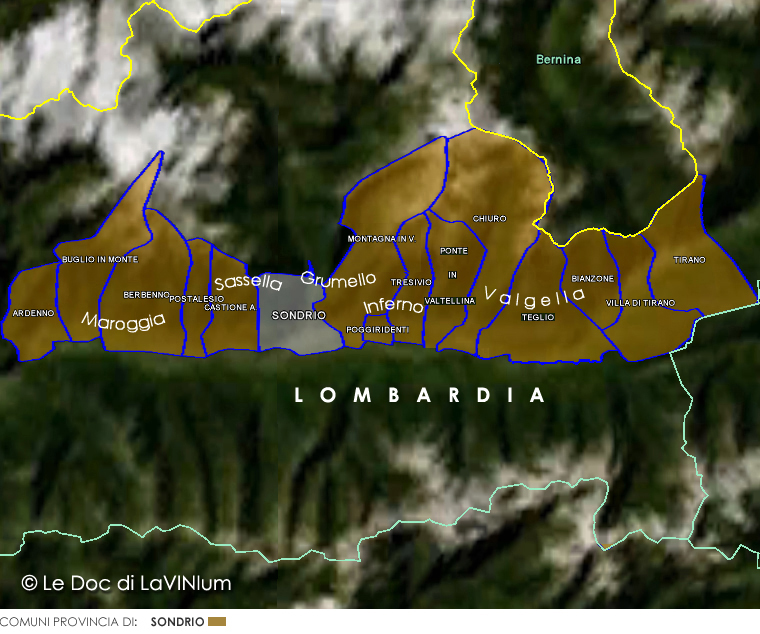
知識筆記 / Knowledge Notes
The name of "Nebbiolo" comes from "Nebbia" (means "fog"). This variety has other synonyms -- "Spanna" (usually called in Alto-Piedmont), "Picotendro", "Chiavennasca" (1595, means "the best site"), "Picoultener", etc. Ancient name includes Nebiol (1266), Neblorii (1292), Nebiolo (1295), Vino Nebiololo (1303), Spanna (1466), etc.
Nebbiolo is an early bud, late mature, and long growing period variety (in Piedmont, usually flowering in early Apr., but harvest in late Oct.). Currently, there are 40 major clones. Proper vineyard site is 200~450m altitude, south-west slope, and limestone soil. The typical flavors includes tar, plant, rose petal, sottobosco (means "understory", such as moss, wet soil with rot leaves, forest), and balsamic vinegar.
The most important region of Nebbiolo are Piedmont, Lombardia, Valle d'Aosta, and Sardegna (surprisingly!). In Piedmont, the most famous subregions are Barolo DOCG and Barbaresco DOCG.

Barolo DOCG covers 11 villages (around 1100 ha), however, generally considered the best sites are La Morra, Barolo, Novello, Castiglion Falletto, Monforte d'Alba, and Serralunga d'Alba. The first three are relatively elegant and delicate, the others are more strong and well-structured. Besides, La Morra are the most feminine, Barolo is considered the most balanced, and Serralunga d'Alba is the most hard, tough, and strong. Barolo DOCG wines can be released after 38 months aging (from Nov. 1 of the harvest year, include at least 18 months in barrel); Barolo DOCG Riserva wines can be released after 62 months aging (from Nov. 1 of the harvest year, include at least 18 months in barrel).

Barbaresco DOCG is relatively more sandy and less rocky, compare to Barolo DOCG. This region covers 3 villages (around 500 ha), and the wines from Barbaresco and Neive are considered better. Barbaresco DOCG wines can be released after 26 months aging (from Nov. 1 of the harvest year, include at least 9 months in barrel); Barbaresco DOCG Riserva wines can be released after 50 months aging (from Nov. 1 of the harvest year, include at least 9 months in barrel).

In Lombardia, Nebbiolo is called "chiavennasca", and the wine style is lighter, more delicate, more herbal, and more fruity. The most important subregions of Lombardia are Sforzato di Valtellina DOCG, Valtellina Superiore DOCG, and Rosso di Valtellina DOC. These three subregions share common geographic area, and these three subregions only require minimum 90% Nebbiolo in their wines. The difference of these three subregion is the wine making process. Sforzato di Valtellina DOCG uses air-dried grapes for wine making, and 20 months aging (from Apr. 1 of the year following the harvest, include 12 month in barrel). Valtellina Superiore DOCG uses fresh grapes, and 24 months aging (from Dec. 1 of the harvest year, include 12 months in wood). Rosso di Valtellina DOC also uses air-dried grapes (at least 21 days drying), but only 6 month aging (from Dec. 1 of the harvest year, not necessary in wood).